Krav Maga Belt Test Preparation
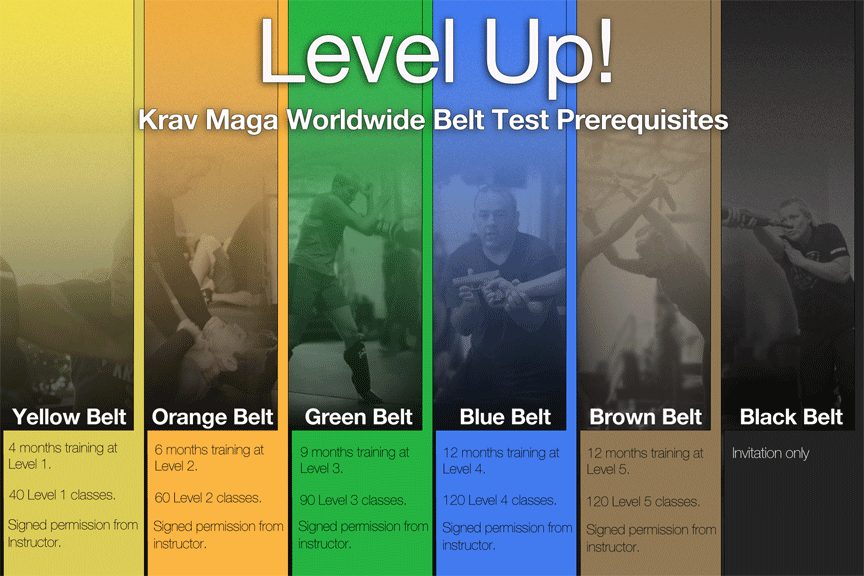
Some background about Krav Maga.
Krav Maga Worldwide® self-defense is a self-defense system that was originally developed in Israel by a man named Imi Lichtenfeld. At the end of WWII when people were immigrating to the newly formed nation of Israel, it quickly became clear to the newly formed country’s leaders that they were going to need a build a military in the interest of national defense.
One of the main problems for Israel was that most of the immigrants had little to no military or hand-to-hand combat experience. Imi grew up in Bratislava where, under the tutelage of his father, he was a competitive boxer and grappler. When WWII started and the Jewish genocide began, Imi joined the Nazi resistance movement in Europe.
Imi immigrated to Israel at the end of the war and his experience in hand-to-hand combat and in military resistance operations against the Nazi’s made him the perfect choice to lead the training of people being recruited into Israel’s military.
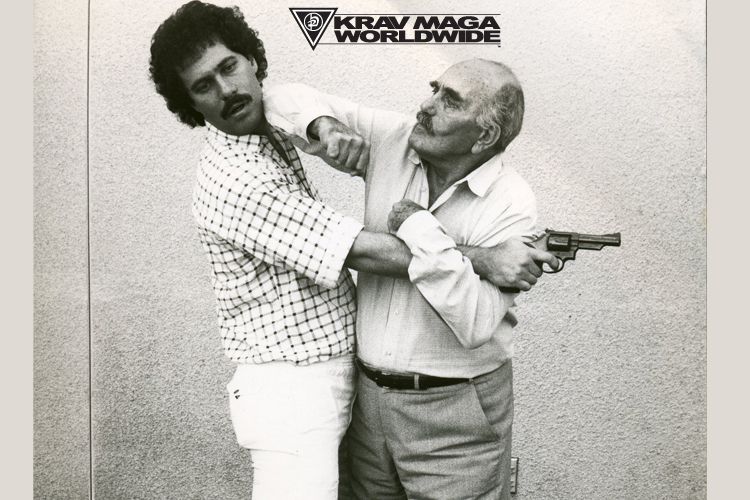
Building skills efficiently.
The challenge Imi faced was bringing people with no hand-to-hand combat experience to a high level of proficiency in hand-to-hand combat in a short period of time. He found the solution by creating a system based on instinctive movements, aggressive counterattacking, and a survival mentality.
The system that Imi created is known today as Krav Maga. Krav Maga Worldwide’s® Chief Instructor Darren Levine received his black belt from Imil Lichtenfeld himself. Imi personally tasked Darren with brining the Krav Maga system to the West and helping to make it available to people so that everyone may “walk in peace”.
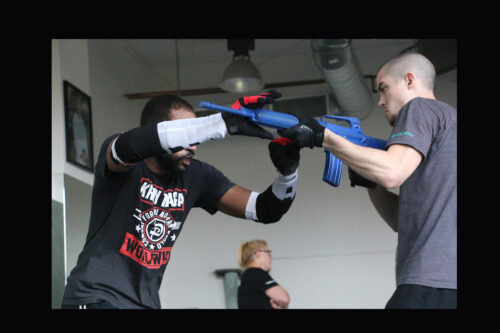
Self-defense system.
The distinction between a martial art and a self-defense system is important to recognize and to understand. A traditional martial art is regarded by those practicing it as an art form of sorts, just like the name implies. This often means the art is a subjective practice that is tied to traditional and ceremonial elements.
Advancing from one level to the next, or one belt to the next, in a traditional martial art is usually based on the judgement of one teacher or master instructor. This is where the subjective aspect of martial arts comes in. It’s the lead instructor or school owner who decides when students have achieved mastery of the art to the extent that they have reached the next level. There’s often no criteria or curriculum or clear path for advancement. Even in very ceremonial practices like forms and katas, the lead instructor decides if what the student is demonstrating is “right” or “wrong”.
Belts are a roadmap not deadlines.
Krav Maga Worldwide® self-defense is not an art. It is a system for teaching people to defend themselves. Krav Maga is designed to bring people to a high level of proficiency in self-defense in a short period of time.
There are no ceremonial elements like forms or katas in Krav Maga. No ceremonial or traditional uniform like a gi or kimono. However Krav Maga does have levels and a belt system. Curriculum for each krav maga belt level is clearly laid out and defined. The prerequisites for advancing to the next level are also clearly defined.
Students know exactly how long they need to be training in their current level, and what techniques they need to develop mastery of in that time, in order to be eligible to test into the next Krav Maga belt level. This makes it easy for any student to understand the track they are on. It doesn’t make Krav Maga belt testing any easier, though.
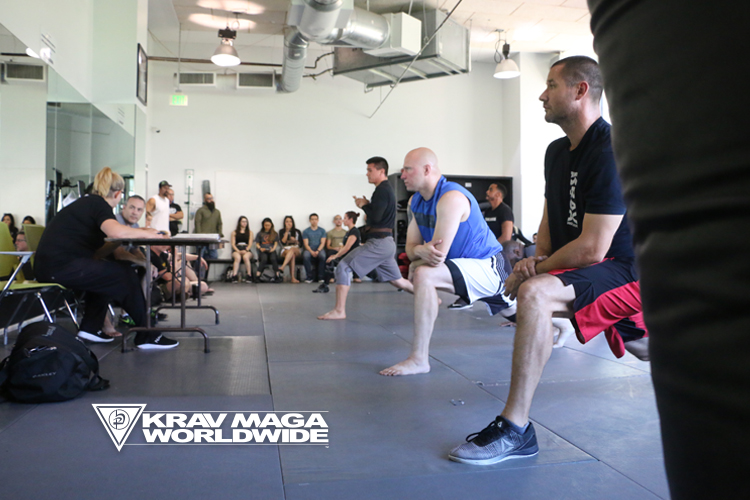
Belt tests.
The Krav Maga belt test is always a source of stress for students. Belt tests are a challenge. They are an experience. Krav Maga belt tests are meant to push students physically and mentally so that they can be confident in their own abilities. It’s not just about advancing to the next Krav Maga level, it’s about making the student effective at self-defense overall.
That adds up to a lot for students to think about as testing dates approach. Krav Maga students at any Krav Maga level always get some sort of nerves prior to testing. Physical challenges often manifest mentally. Going into a physical challenge like a race or competition, can cause doubt, anxiety, changes in attitude and temper, even before the challenge begins. On the flip side of that, mental challenges can often manifest physically. Going into mental challenge like a big test or interview, the worry and doubt involved can make people feel physically unwell. Krav Maga belt tests are both a physical and mental challenge.
When it comes to preparing for a belt test those are the two main aspects of preparation that must be addressed. Realistically, anything that a student is stressing about or feeling nervous about can be boiled down into either physical or mental.
Physical preparation.
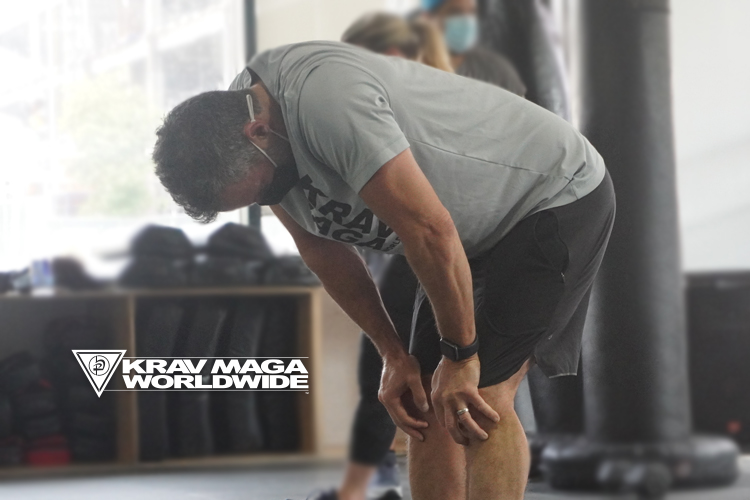
Krav Maga belt tests last for about four hours at a minimum. That is to say that a Krav Maga Level 1 belt test, for students transitioning from white belt to yellow belt, has sufficient material in the level curriculum for the test to take at least four hours. As students advance in Krav Maga levels the curriculum increases and so do the length of the tests
This is one of the things that students worry about the most, ie “can I actually make it through a four hour test”. The answer is “no”, you can’t, unless you prepare for it, physically. What many students tend to forget is that some of the preparation for the test has already been done.
They’ve gone through the requisite number of classes, and been at that Krav Maga level for the requisite period of time. Now, a regular Krav Maga self-defense class is not four plus hours long. However physical preparation for a belt test is completely in the student’s control. That’s a good thing.
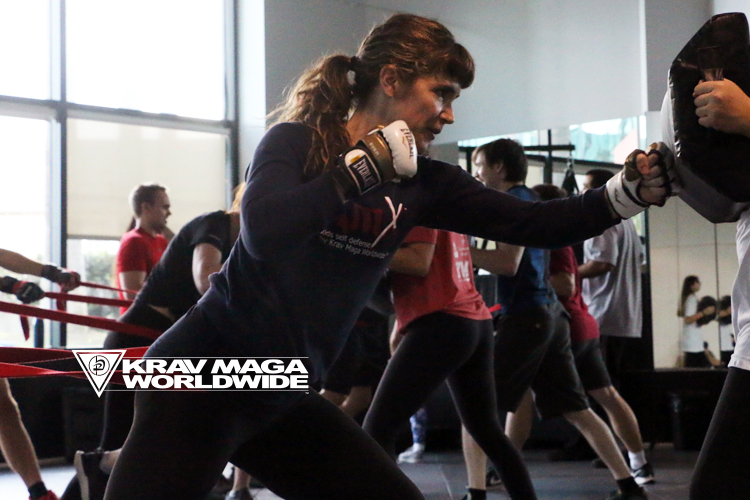
Train for it.
If you are worried about your level of physical conditioning going into a Krav Maga belt test, the solution to that is simple, do more. Nobody get can you into better shape for you.
Your level of physical preparedness is in your hands. Many Krav Maga Worldwide® certified training centers offer a comprehensive Fitness Program that will increase your overall level of physical strength and conditioning. Getting into these classes regularly will give you an edge in terms of your physical preparedness.
Classes like KM Bag utilize the same striking techniques, or “combatives” that are taught in self-defense classes, in a format that is designed to be a high intensity workout. If you aren’t taking classes like KM Bag or Strength and Conditioning on a regular basis prior to the test, make sure to add them to your routine no later than a month out from the testing date. Take consecutive classes if you can, so that you are training for a period of two or three hours at a time on a regular basis. You can stack Krav Maga Worldwide® self-defense classes with KM Bag and Strength and Conditioning classes to give yourself a physical and mental challenge.
If you can’t make it to those classes because of your schedule, etc. make sure you are doing more outside of the training center to push your level of overall conditioning. The only way to get into better shape and to improve your level of conditioning for your Krav Maga belt test is to do more work.
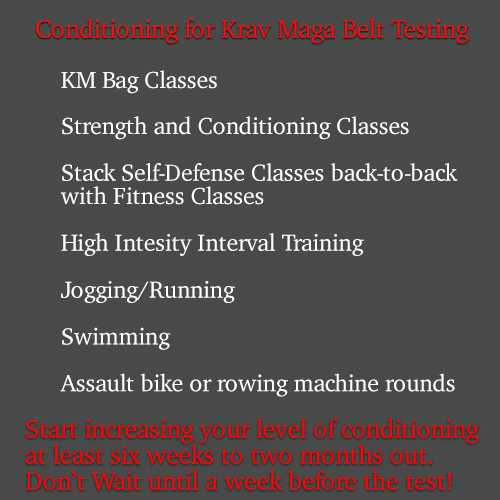
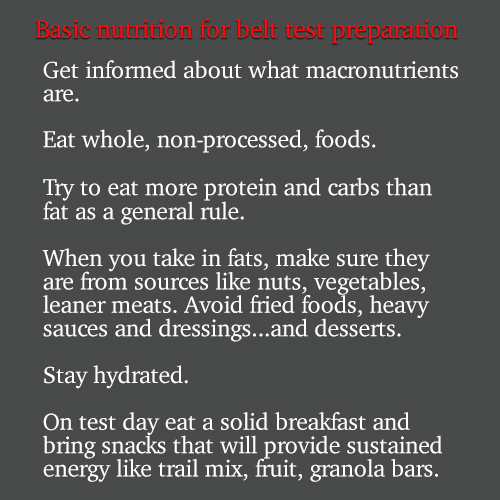
Nutrition and recovery.
Further, make sure that you are maintaining your body for optimal levels of performance. Pay attention to what you are eating and how you are recovering from training. Make sure that you are doing some sort of maintenance like yoga, massage, cryotherapy, or soaking in hot or cold tubs, to promote recovery in your body.
When it comes to nutrition, make sure you are eating foods that are going to fuel you and not burden you. In general a healthy diet will be low in saturated fats and cholesterol, so take steps to be certain you are giving yourself the best chance of success with your diet. The night before the test, do not drink alcohol in excess, and make sure to get plenty of sleep. On the day of the test, make sure you bring a sufficient amount of water with you, and pack a snack that will provide clean fuel for your body.
Mental Preparation

The Krav Maga Worldwide® self-defense system clearly lays out the techniques and curriculum involved in each Krav Maga level. This is a great tool for students to use in order to stay on track in their training and to understand the system overall. However when the time to take a Krav Maga belt test begins to draw near, students will often get intimidated by the list of techniques in their Krav Maga level.
The biggest concern is “what if I don’t know X technique?” or “what if I do X wrong when doing Y technique?”. There’s no easy way to relieve this sort of doubt or uncertainty in someone else’s mind. However it’s important to realize when you are doing this to yourself.
Mental reps.
The easiest way to relieve this sort of stress is to do some “mental reps” or visualization exercises in the days and weeks prior to the test. You can ask instructors for help with this. Krav Maga Worldwide® certified instructors have dedicated their lives to making people strong and safe. They will answer specific questions about techniques.
Your job in doing “mental reps” is to think about how the technique is done correctly, and why it is done that way. Visualize yourself doing each technique the correct way on the day of the test…this will help your overall practice and development in general. Reviewing fine points on your own and sometimes even practicing the techniques “dry” to a mirror or with your eyes closed reinforces the connection between your mind and body and helps you remember.
Remember that you have experience.
Another element to consider here is what was mentioned in the above section, you’ve already done much of the preparation through your regular training.
The Krav Maga Worldwide® self-defense system is designed to give students enough time to train on all of the material in each Krav Maga level. It’s not as if students are going into the tests without having ever seen the material before. The doubt and worry about the Krav Maga level curriculum is created from within.
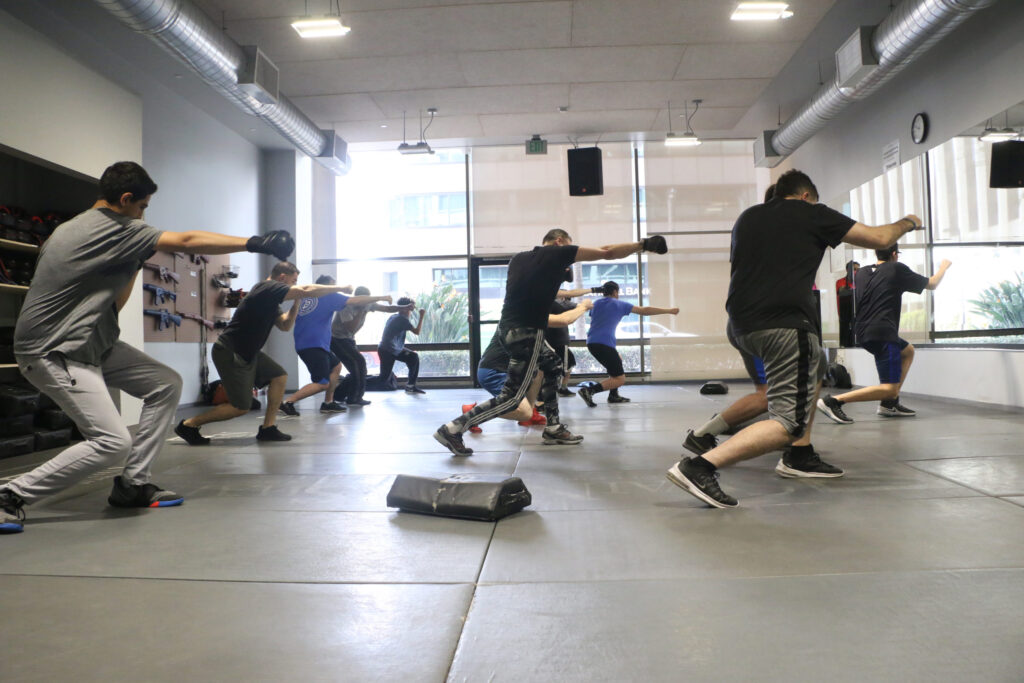
Set yourself up for success.
Don’t wait until the night before the test to start honing in on all of the details with mental reps. Start practicing this a week or so before the test. Go over and over any material or technique that you may be uncertain about. The night before the test, try not to clutter your mind with doubts, focus on positive visualizations about taking on the challenge of the test and passing.
Further, you can take some comfort in the fact that each Krav Maga belt test starts with a review of all of the techniques in that Krav Maga level. This first phase of the test is often referred to as a “workshop”.
In this phase of the test you can ask last minute questions about small details in techniques. The instructor who is giving the test is going to expect that you have a good grasp on any technique that you ask about and that you shouldn’t have to be re-taught from the first step.
However fielding questions and making minor adjustments during the workshop is expected. So, don’t stress too much. You’ll have one last chance to ask for clarification before actually being tested.
Go out there and give it your all.
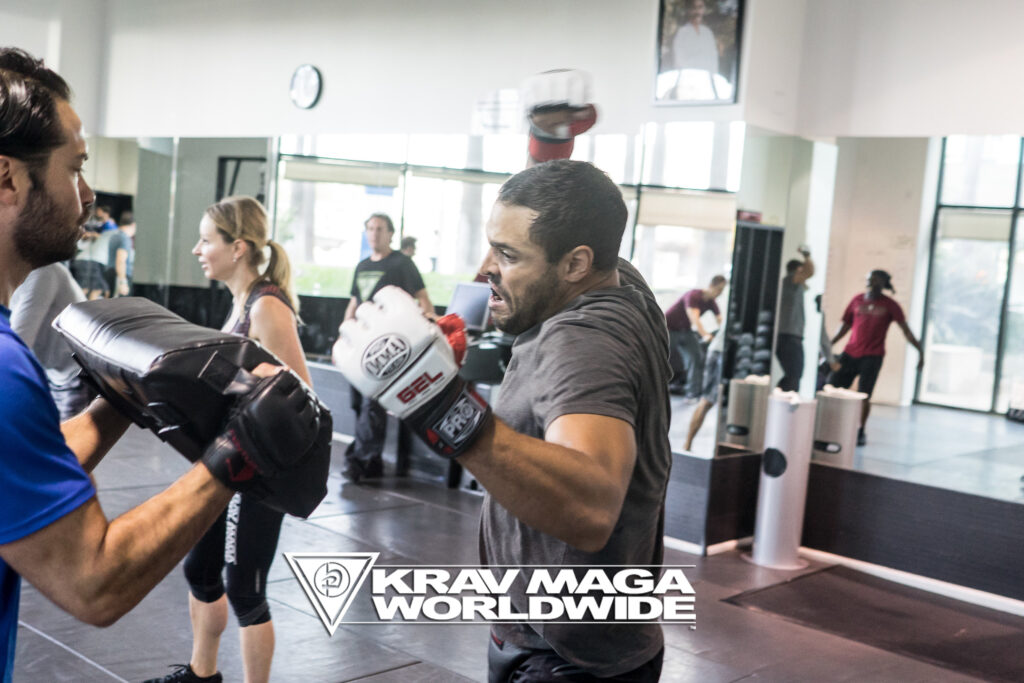
Krav Maga Worldwide® self-defense is a self-defense systems based on instinctive movements, aggressive counterattacking, and a survival mentality. On the day of the test focus on being able to demonstrate all of those things.
Remember that your overall effort will be taken into account in determining your readiness to move on to the next Krav Maga level. Be ready to be challenged, and for an experience that will change you and help you grow. Know that you will need to push yourself when you are tired. You’ll be able to do more than you think you can if you keep that “survival mentality” and a positive attitude.
Alleviating the worry and stress involved with testing comes down to taking steps to make sure that you are prepared. Take action and you’ll eliminate the worry. Your doubt will turn to confidence and the test will be the natural next step in your development.
